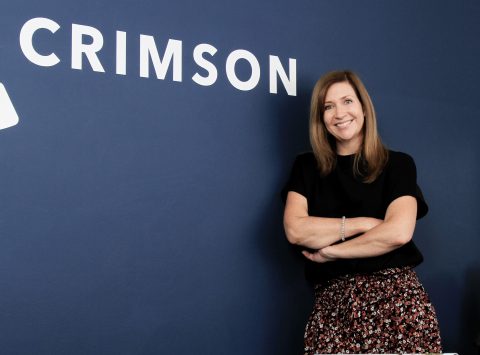Business Day Commercial Property
Renewable Help On The Way
Tired of load-shedding and the constant electricity price increases, many property developers and owners are being realistic about the future. Today, it is not just about green buildings anymore, although that is strong motivation in itself as the effects of climate change become apparent. Increasingly, it is about hard rands and cents. Operating cost-savings are an established fact, as is efficiency.
Dr Dominic Wills is CEO and co-founder of SOLA Future Energy, an engineering, procurement and construction (EPC) company, which champions and provides embedded solar power in Africa. Its sister company, Aurora Power Solutions, has developed 225MW of successful solar PV projects in round 1,3,4 of the South African Government’s Renewable Energy, Independent Power Producer (REIPPP) projects, overseen by Wills as an executive director. Now SOLA Future Energy has overseen the build of over 30MW of solar PV and storage projects at commercial installations.
“Large shopping centres have been early adopters of the solar PV generation trend. With ample roof space, high tariffs and large daily energy usage, they are a perfect case study for the cost-saving benefits of solar power,” says Wills.
Solar PV is a perfectly deployable form of small-scale embedded generation (SSEG) of electricity, which allows energy to be produced at the site of use. The current business case allows for a two-to-three-year pay back, while the lifetime is 25 years. Currently, this is the largest market for embedded solar PV.
Wills says that the costs of PV are rapidly decreasing, with most paybacks being between two to four years, depending on the load profile of the client and their reliance on diesel generators. Modern batteries are still relatively expensive, but they’re downward cost trajectory as scale increases. Electric cars and utility battery deployment are helping this scale.
“Many commercial properties do not have the capital to outlay, even at these payback periods. As such, Power Purchase Agreements (PPAs) for solar PV are becoming equally popular.
“A solar PV PPA with fixed, agreed-upon tariff increases over the plant’s 20-year lifespan makes them very appealing to large businesses wanting to shield themselves from Eskom’s unpredictably-rising tariffs. This is especially true since Eskom’s tariffs will continue to rise in the coming years, given the embattled utility’s debt and rising costs,” says Wills.
Case history: Cedar Mill Mall, Clanwilliam
Since the launch in June 2018 of the Cedar Mill Shopping Mall in Clanwilliam along the N7, Western Cape, a solar PV system installed during the construction phase has saved the mall 142 193 litres of diesel since monitoring began in August 2018. This is equivalent to around 384 tons of carbon emissions.
The town’s economic development has long been limited by access to adequate power provision by Eskom. Typically, due to constraints on the national power grid, a 250kVA line was available to developers of commercial infrastructure within the town. For years this has limited the potential of the development of an adequate, modern retail centre to service not only the town, but also the whole region.
Thankfully, the town was not left to the resources of the national power utility and some forward thinking on the part of a developer resulted in the commissioning of an established EPC company. “The solution was to use the substantial roof space over the planned mall to install 2 580 solar panels with a capacity of 851kW. In addition to this, a 696kWh Li-Ion battery system from Tesla was installed to store excess power in times of excess and discharge in times of need,” explains Wills, whose company was commissioned to do the work.
Wills says that the 852kW installed capacity microgrid at Cedar Mill Mall developed by SOLA Future Energy was a unique one – using both the efficacy of solar PV and batteries with the Eskom grid to optimise the cost- effectiveness for the client.
The development of the mall has resulted in the creation of about 300 jobs and has served as a boon for the local Clanwilliam economy. Since the system began operating in August 2018, it has generated over 800 000 kWh of clean energy.
Energy from waste
Meanwhile, another fascinating renewable energy project has been retrofitted at the N1 City Mall near Bellville in Cape Town. An on-site, anaerobic digester has been installed at Growthpoint’s N1 City Mall in Cape Town. This is processing the waste from the mall to generate clean methane gas for fuel. An internal combustion engine consumes this waste to produce green electricity and hot water for the shopping centre.
This methane is consumed by an internal combustion engine to produce green electricity and hot water for the shopping centre.
According to Gavin Jones, Growthpoint Properties regional retail asset manager, Western Cape: “Shopping centres can be big food waste generators, especially those with a significant selection of restaurants and grocery shops. This makes them excellent locations for waste-to-energy conversion. N1 City Mall is proud to lead this initiative for its environmentally-conscious retailers and customers.”
The specialised company concerned is Waste Transformers, a waste solution provider specialised in converting organic waste streams into energy while simultaneously transforming waste into new products. Lara van Druten, CEO of The Waste Transformers says: “This project demonstrates how companies can co-operate in a mutually inclusive way that generates energy for positive economic and social change.”






 Sign-up and receive the Business Media MAGS newsletter OR SA Mining newsletter straight to your inbox.
Sign-up and receive the Business Media MAGS newsletter OR SA Mining newsletter straight to your inbox.